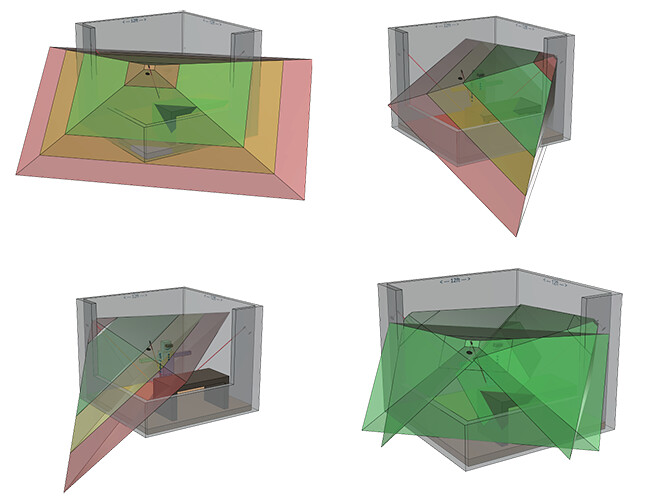Posted by Oculus
We’ve seen a lot of interest in experiencing Rift at roomscale,* so we wanted to share how adding a third sensor to your setup can take your VR experience to the next level!
Stay tuned to our blog this week for deep dives on everything you need to know to configure a full roomscale setup, including information on USB sensors, host controllers, and extra equipment.
First, let’s start with sensor placement.
While lots of you will stick to the basic three-sensor setup, outlined in our experimental roomscale guide, we know many enthusiasts want to push the limits. By building upon that setup and exploring new configurations, you’ll improve room coverage and better prevent occlusion (things like your desk or furniture blocking the view of the sensors).
Today, we’ll talk about alternate sensor placements and some optional hardware you may want to consider. Let’s start with how the Oculus sensors detect Rift and Touch controllers.
There are many reasons we recommend leaving your sensors on your desk, spaced three to six feet apart. It’s easier to connect the sensors to your computer. Even better, it doesn’t require drilling holes in your wall or running cables across the room.
However, some of you will gladly sacrifice ease of setup for improved room coverage and less occlusion. To create the best setup for your particular space, check out these details on the Oculus sensor’s field of view and ideal tracking distance.
This is what the Oculus sensor “sees” in front of it
In the diagram above, the sensor’s general field of view is 100 degrees horizontal and 75 degrees vertical. Notice that if you get really close to a sensor, it’ll generally be difficult for it to see more than the middle of your body—so you won’t get great tracking within about a foot and a half of it.
A single sensor offers ideal Touch controller tracking up to six feet away, good tracking up to eight feet away, and then essentially won’t track past 10 feet away.
That said, in the event that more than a single sensor can see the controller at a given time, we’re able to significantly improve the tracking volume. In cases where two sensors can see the Touch controller, you should get ideal tracking up to at least 10 feet. The following images illustrate how the ideal tracking volume of various sensor configurations look when placed on a six-foot desk inside a 12-foot by 12-foot room:
Tracking volume of a single sensor when only one sensor can see your Touch controller
Combined optimal tracking volume when more than one sensor can see your Touch controller
As you can see, there’s a pretty high maximum usable distance available when using just two sensors placed on a desk in front of you.
You’ll notice that, in our two-sensor 360 and three-sensor experimental roomscale setup guides, we only recommend a maximum playable area of five feet wide by five feet deep and eight feet wide by eight feet deep, respectively. That’s because of the risk of occlusion. If more than one sensor sees your Touch controller at a given time, you’re more likely to get good results at even greater distances—so you get a larger play area with three sensors compared to just two. We recommend experimenting with your available space and sensor positions to find the best results.
While your results may vary, using more than three sensors can create more technical and performance issues than it’s worth. We recommend sticking with three.
One great way to improve your sensor coverage and reduce occlusion is to place or mount your sensors higher up on your walls, facing down towards the middle of your play area. You can do this by mounting them on your front wall, or by mounting them in the corners of your room (which we recommend).
You can use a 3D-printed corner mount that fits a standard tripod connector as found on the Oculus sensor, similar to this:
One of our favorite setups mounts three sensors directly in the corners of your room, about eight feet high, facing downward at a 45-degree angle toward the center of your play area, as shown in the following diagrams:
Tracking volume of a single sensor when only one sensor can see your Touch controller in Oculus roomscale
Combined optimal tracking volume when more than one sensor can see your Touch controller
This actually works well for both two-sensor (in opposite corners of the room) and three-sensor setups.
We hope this inspires you to try out some new configurations at home! Don’t miss tomorrow’s post to learn how to balance bandwidth on USB for maximum performance.
— The Oculus Team
*Roomscale is an optional feature. Your results and performance may vary. Not all PCs will have enough ports to support roomscale, including some PCs that otherwise meet our recommended and minimum specs.















